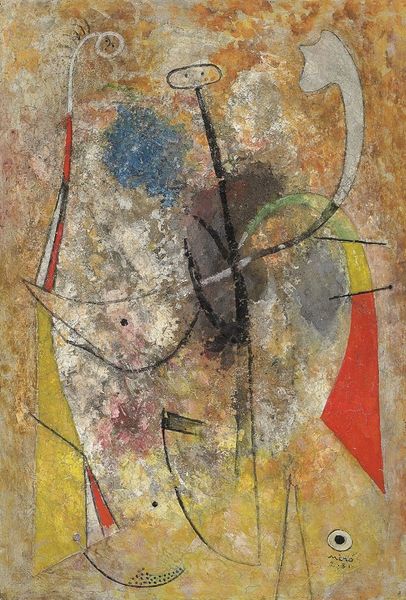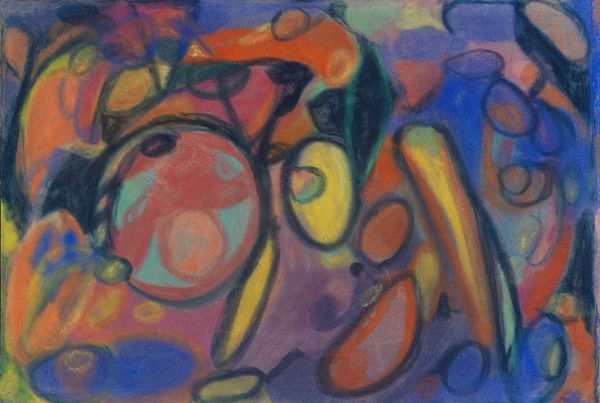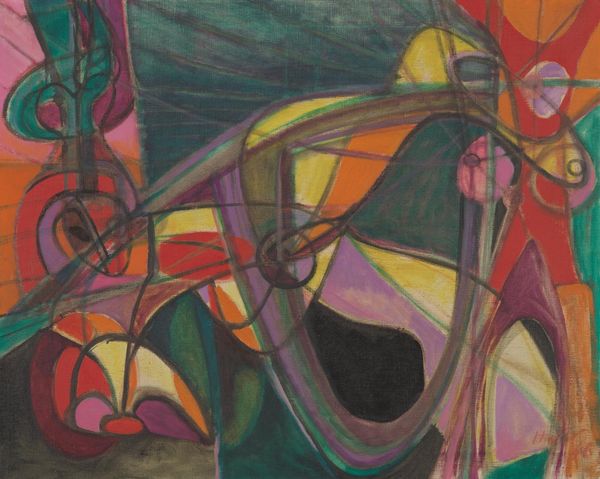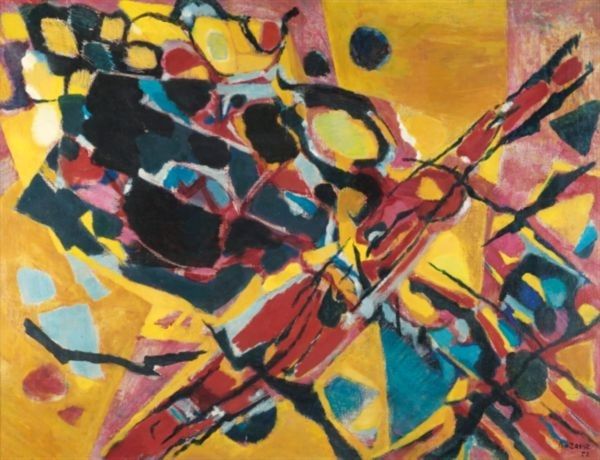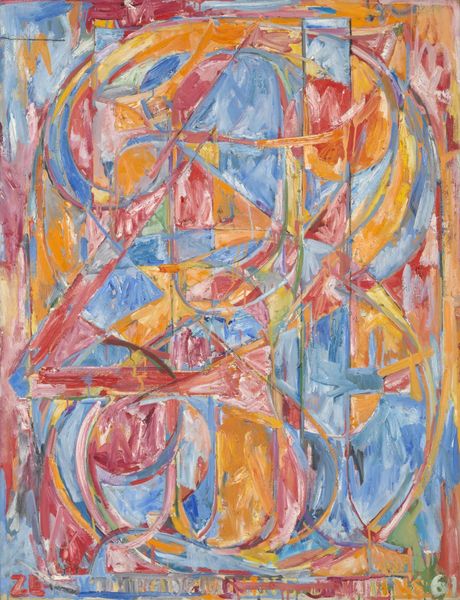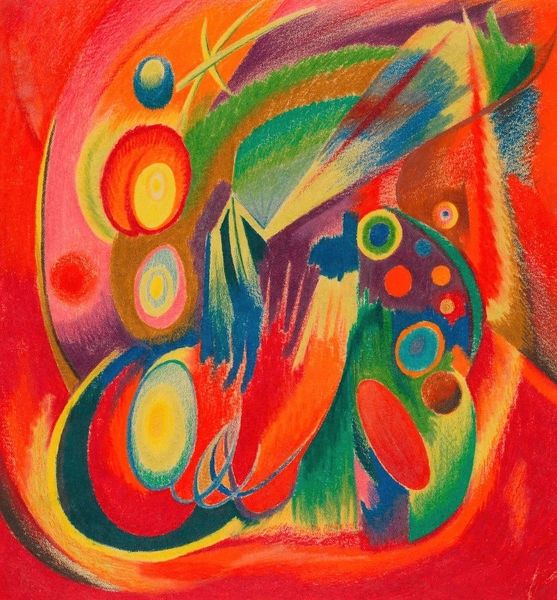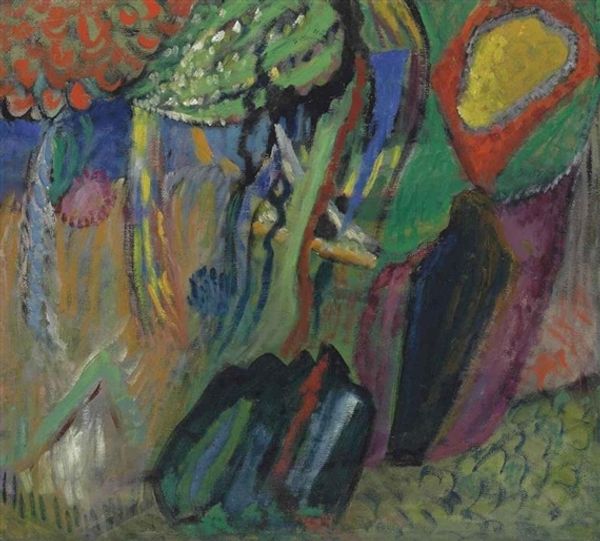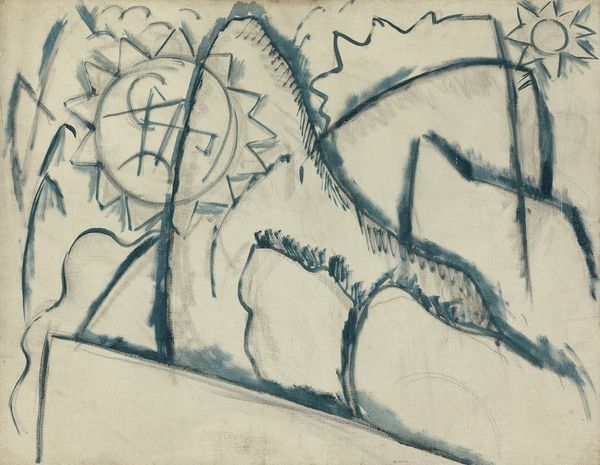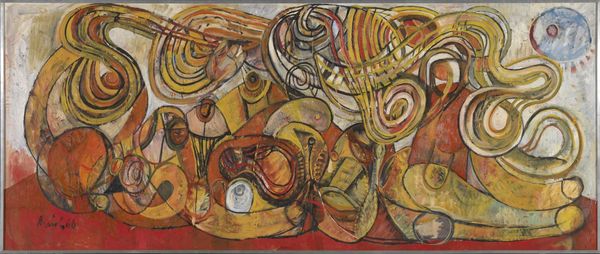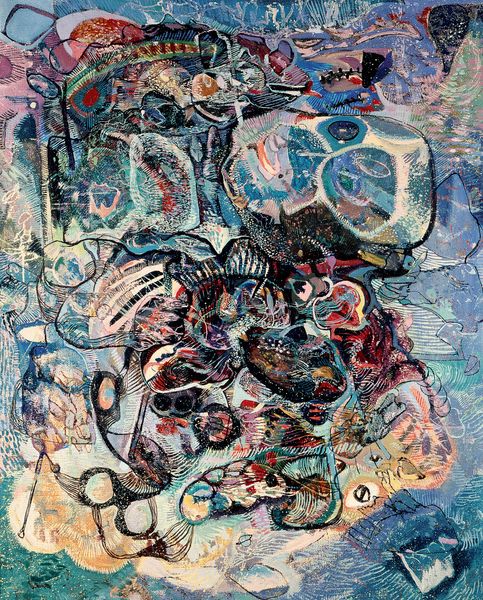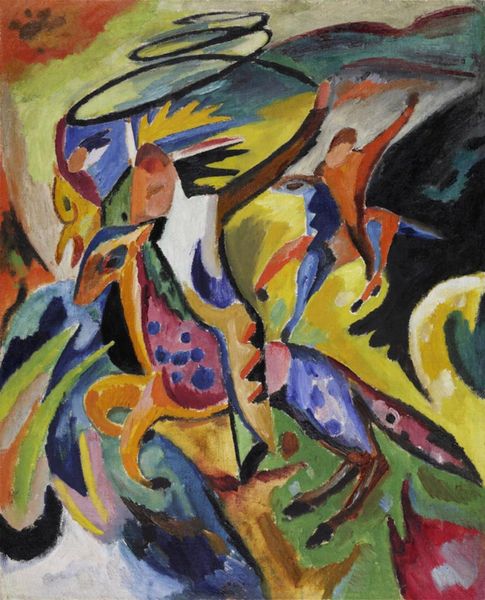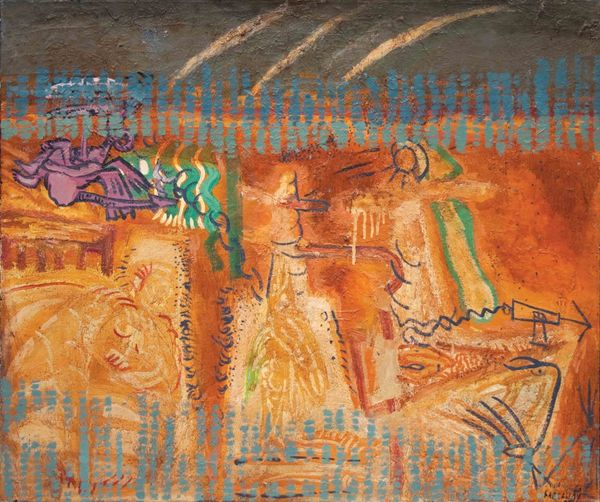
watercolor, impasto
#
water colours
#
watercolor
#
impasto
#
geometric
#
expressionism
#
abstraction
#
line
#
watercolor
Copyright: Public Domain: Artvee
Editor: This is Wassily Kandinsky's "Boot," created in 1911 using watercolor. It feels chaotic, but somehow grounded by the geometric shapes. How do you interpret this work, especially considering its title, "Boot"? Curator: Kandinsky’s work often rejects straightforward representation. It invites us to consider the social and political landscape of pre-WWI Europe. He was moving towards abstraction during a time of immense social upheaval, so do you think this piece reflects that unrest, even subconsciously? Editor: It definitely feels turbulent, like the calm is disrupted. The abstract forms jostle against each other rather than creating a sense of harmony. Is the "Boot" more of a symbol, maybe of social structures being upended? Curator: Precisely. The boot could represent the military, the established order. Kandinsky, like many expressionists, sought to challenge those structures. Consider the color choices too – how do they work to convey the message? Are they discordant, challenging? Editor: I see that now. The clashing colors create a visual friction, contributing to the sense of unease. He isn't just painting a boot; he's conveying a feeling. Curator: Exactly. Think about how the Expressionist movement, as a whole, used art to express the inner self. And ask, how might "Boot," fit into a larger conversation about power structures, identity, and societal anxieties? Editor: This piece really opens up when considering it in the broader socio-political context. I see it now as a commentary on the instability of the era, not just an abstract composition. Curator: It is a call to resist traditional modes of thinking. Considering that history helps unlock a richer understanding of Kandinsky's innovative, abstract work.
Comments
No comments
Be the first to comment and join the conversation on the ultimate creative platform.
